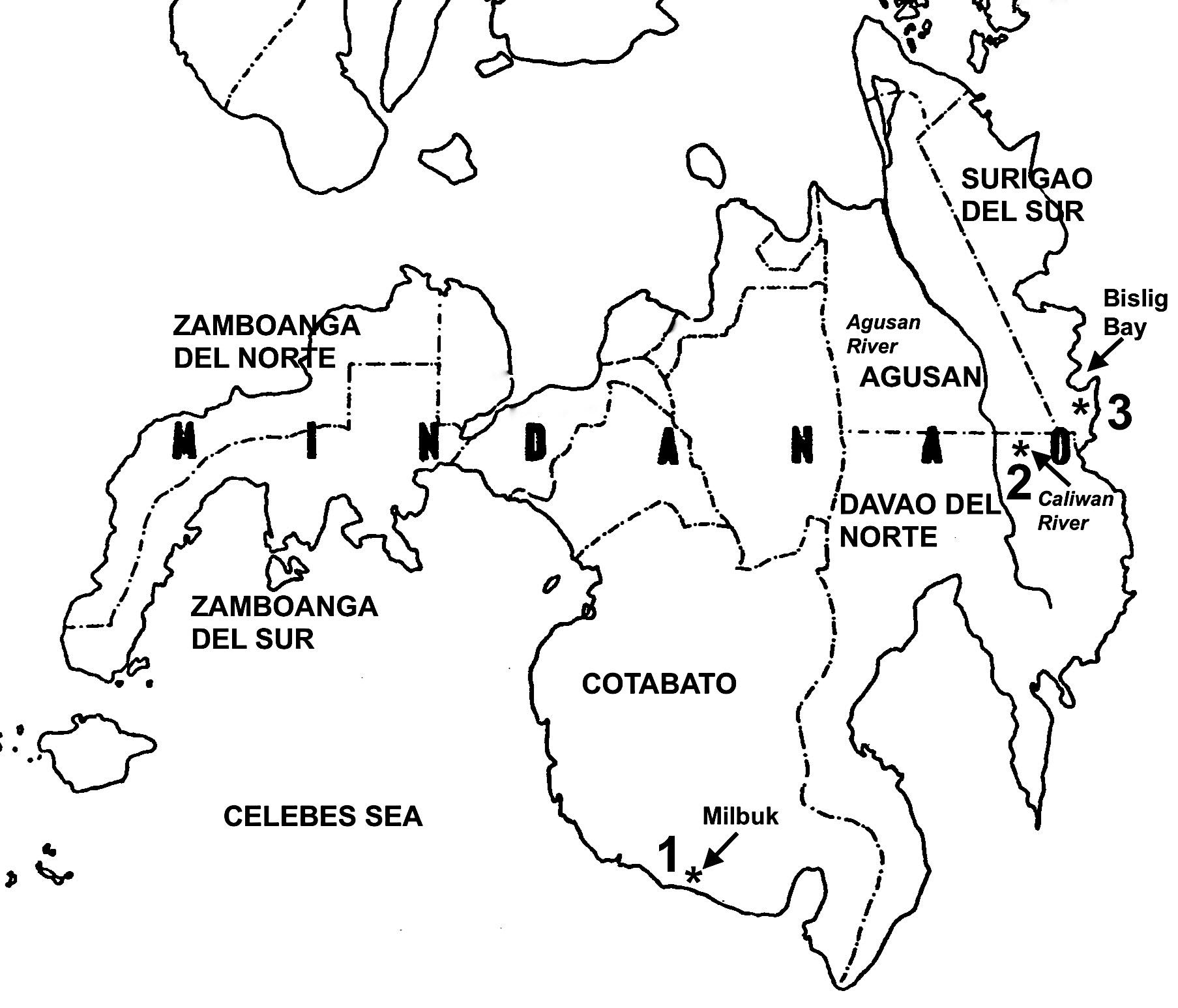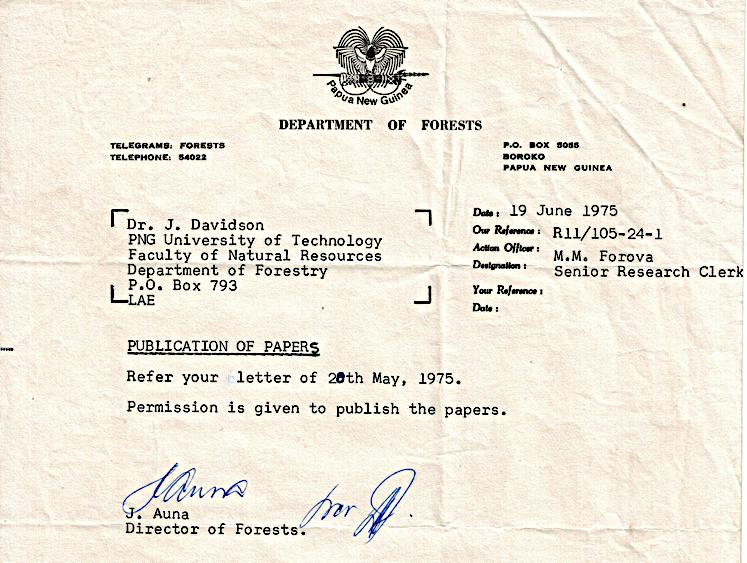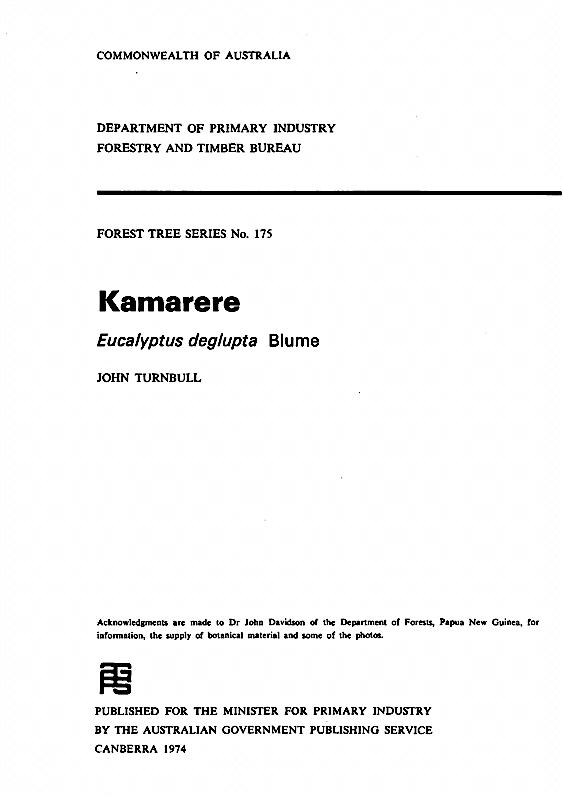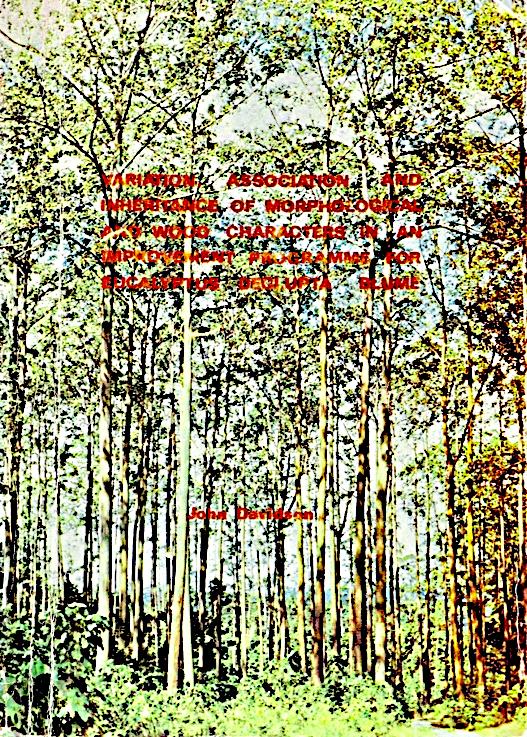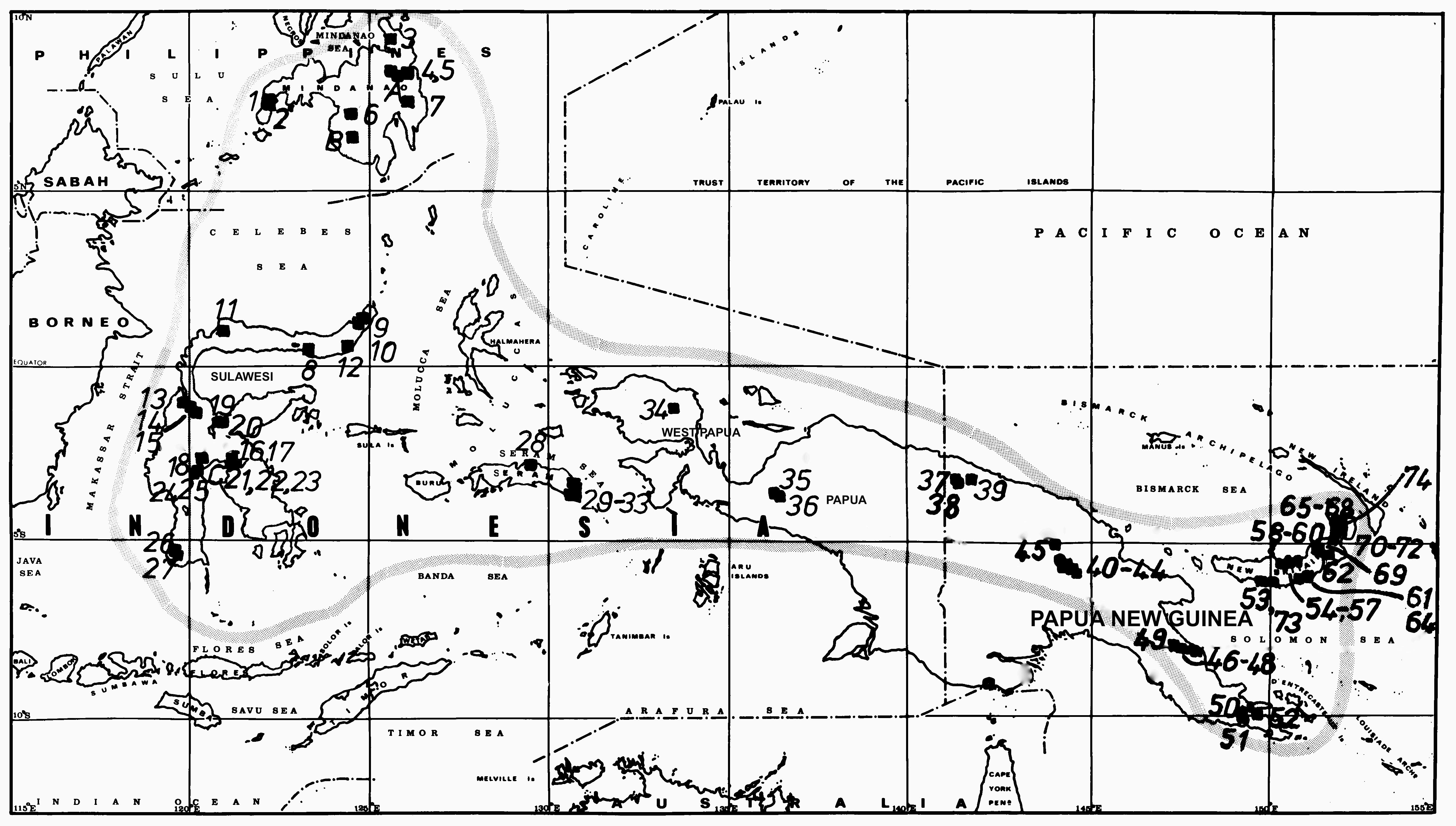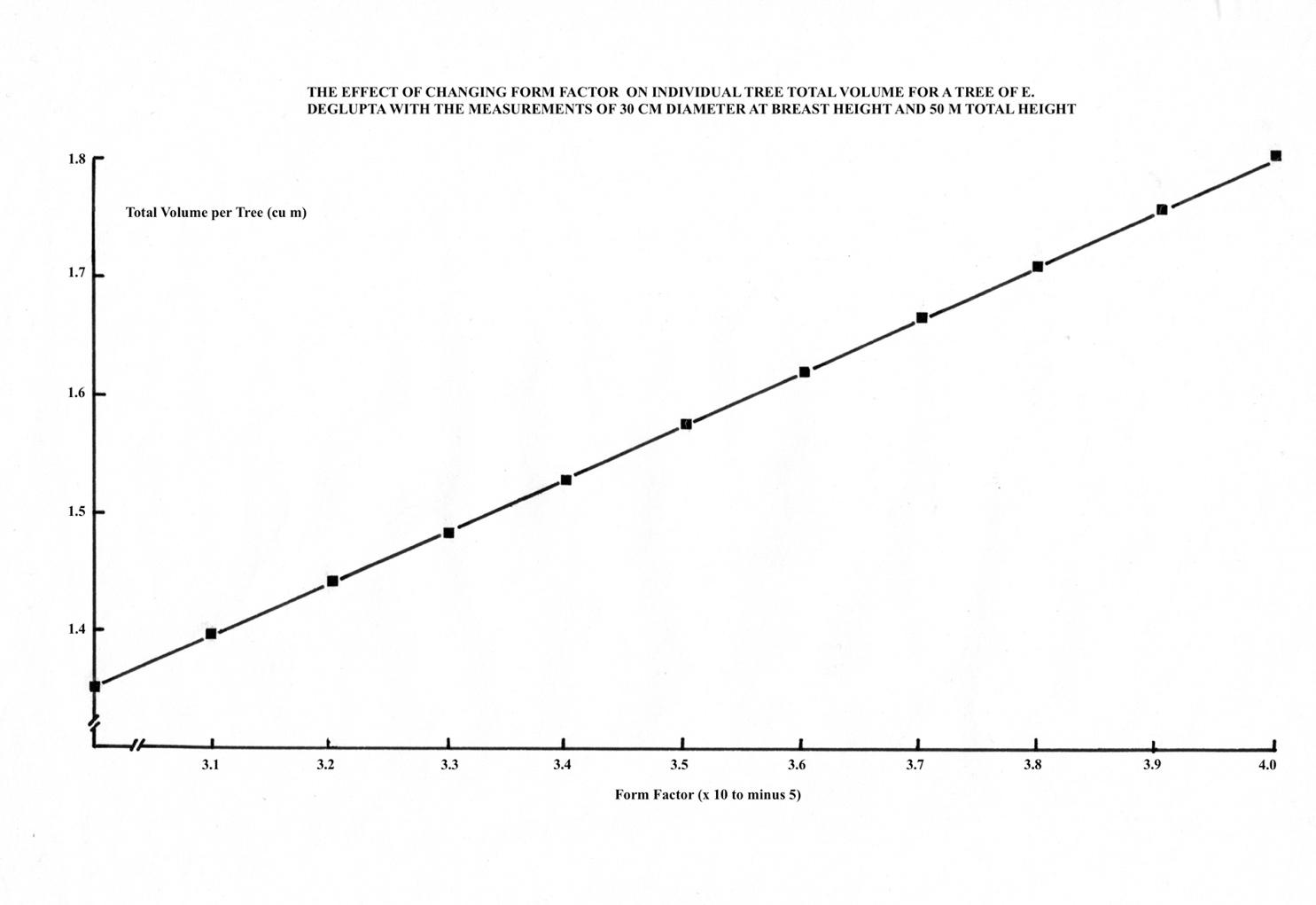
1 minute read
Tree age and average size
from PNGAF MAG ISSUE # 9 B-5B4D3 Dr John Davidson Accompaniment "RAINBOW EUCALYPT MAN" Part 6 of 8 parts
by rbmccarthy
VOLUME REGRESSIONS AND FORM FACTORS FOR TREES OF E. DEGLUPTA GROWING ON THREE DIFFERENT SITE QUALITIES+ IN PAPUA NEW GUINEA
Site Quality Class Volume Regression# Form Factor (X10-5)* No. of Trees Sampled Multiple Correlation Coefficient
Advertisement
1 - 2 V=3.715X10-5D2H 3.715 (0.47) 2 - 3 V=3.738X10-5D2H 3.738 (0.48)
161 0.995 46 0.996 3 - 4 V=3.514X10-5D2H 3.514 (0.45) 56 0.997 + Spacing and age of the trees were approximately the same at each site. # V = total volume in cubic metres, D = diameter at breast height in centimetres, H = total height in metres. * The figures in brackets exclude a constant value of 0.785 x 10-4 derived from the term π/4 and the conversion of square centimetres to square metres for D2 .
Tree age and average size
Data were available for segregation into three age classes (1-5, 6-10 and11-20 years) growing on similar sites. These age class ranges were selected arbitrarily to obtain sufficient data from comparable sites.
The volume regressions for each of the three age classes are given in the table below. There are considerable differences in the form factors across the age classes.
VOLUME REGRESSIONS AND FORM FACTORS FOR SAMPLE STANDS OF E. DEGLUPTA IN THREE DIFFERENT AGE CLASSES+
Age Class (years) Volume Regression# Form Factor (X10-5)* No. of Trees Sampled Multiple Correlation Coefficient
1 - 5 V=3.813X10-5D2H 3.813 (0.49) 6 - 10 V=3.632X10-5D2H 3.632 (0.46) 32
0.994 100 0.988 11 - 20 V=3.090X10-5D2H 3.090 (0.39) 227 0.993 + Spacing was approximately similar. The sites were on well-drained terrace soils consisting of pumice and pumice alluvia. # V = total volume in cubic metres, D = diameter at breast height in centimetres, H = total height in metres. * The figures in brackets exclude a constant value of 0.785 x 10-4 derived from the term π/4 and the conversion of square centimetres to square metres for D2 .
By extrapolation, there are considerable differences in the form factors for diameter and height size classes also. The form factor for large (older) trees is quite low (3.090) when compared with that for small trees (very young) (3.813).)

